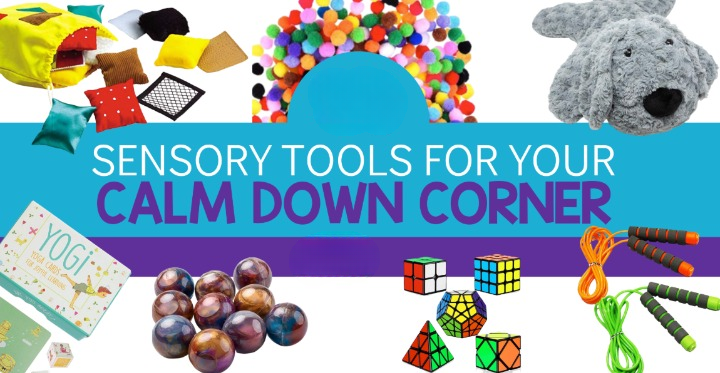What Are the Must-Have Sensory Tools for Your Calming Corner?
- Vibe Writers
- Jul 24
- 4 min read

A well-prepared calming corner can become a vital part of any classroom or home learning space. It offers a peaceful environment for children to reset, self-regulate, and re-engage with their surroundings. Incorporating the right sensory tools, such as textured cushions, weighted blankets, or a Nature Hop Sensory Path, can make this space more effective and inviting. With thoughtful selections, educators and caregivers can easily support children's emotional and sensory needs.
The Purpose of a Calming Corner
Calming corners are designed to help children develop emotional regulation. Instead of facing discipline, children have the opportunity to calm themselves, understand their feelings, and return to activities feeling more centered.
Sensory tools are key to this. They give children something to focus on and interact with, which can be grounding during moments of stress. From visual cues to tactile stimulation, these tools provide a range of options for children to manage their emotions independently.
Why Sensory Tools Matter
Sensory input helps regulate the nervous system. By offering tools that stimulate or soothe, calming corners can support various sensory needs. Some children benefit from deep pressure, while others respond well to movement or visual aids.
Geyer Instructional provides practical tools that fit perfectly into these spaces. Products like the Nature Hop Sensory Path create movement-based activities that are not only calming but also fun. When used near or within a calming corner, these decals support both motor planning and self-regulation.
Top Sensory Tools for Every Calming Corner
Creating a sensory-rich space doesn't require overwhelming options. A few carefully chosen tools can meet multiple needs. Below are some ideal items to include:
Tactile Fidgets
These small, handheld items help children release energy or anxiety in a non-disruptive way.
Stress balls
Sensory putty
Textured rings
Children can keep their hands busy, which in turn helps calm their minds.
Weighted Items
Weighted lap pads or stuffed animals provide gentle pressure. This can be soothing for children needing proprioceptive input.
Weighted blankets
Stuffed toys with weight
Weighted lap cushions
These support calm focus and reduce restlessness.
Sensory Decals
Visually engaging and easy to apply, Sensory Decals transform any space into a multi-sensory environment. Whether placed on walls or floors, they can signal children to slow down, breathe, or engage in a quiet movement. Geyer Instructional offers a variety of these decals that help children connect with their bodies and surroundings in a calm, thoughtful way.
Movement-Based Sensory Support
Sometimes, what a child needs most is movement. A calming corner that includes options for safe, guided motion can offer this relief. The Nature Hop Sensory Path is a standout option for this purpose. It turns floor space into a guided route filled with visual cues and natural themes.
Children can hop, balance, or tiptoe their way through, all while regulating their behavior. Placed near a calming corner, this path serves as a helpful transition tool. It allows children to move purposefully before returning to seated tasks.
Visual and Auditory Tools
Some children respond well to gentle sounds or calming visuals. Adding light and sound elements to a calming corner can provide children with additional ways to regulate their emotions.
Soft-glow lamps or bubble tubes
Noise-canceling headphones
Wind chimes or sound machines
These elements can be layered with Sensory Decals to create a cozy, immersive space that encourages calm behavior.
Organizing the Sensory Space
While variety is helpful, it's important not to overcrowd the area. Select a few items that cater to the needs of most children. Keep the space open and accessible. Label containers and tools for easy cleanup.
Consider visual charts or steps that guide children through breathing exercises or the use of tools. Geyer Instructional offers a range of organisational solutions, complemented by sensory tools, making it easier to create a space that's both effective and clutter-free.
Supporting Different Sensory Needs
Not all children benefit from the same tools. Some prefer quiet observation, while others seek active engagement. A well-rounded calming corner supports different preferences:
Quiet nook with a weighted blanket and soft seating
Interactive space with the Nature Hop Sensory Path
Visual corner using Sensory Decals with nature or geometric themes
The key is flexibility. Tools should be interchangeable and easily accessible without adult assistance.
Choosing Quality Materials
Durability is essential in any learning space. Sensory items are often used daily, so they need to hold up. Materials should be safe, easy to clean, and suitable for different age groups. Products from Geyer Instructional are designed with these needs in mind. Whether it's Sensory Decals that resist wear and tear or robust floor paths like the Nature Hop Sensory Path, their options help keep calming corners ready for daily use.
The Bottom Line
A calming corner equipped with well-chosen sensory tools can offer a real solution for emotional support and self-regulation. With thoughtful planning and the right resources, children can learn to manage stress in positive and healthy ways.
Schools and caregivers who turn to Geyer Instructional will find a wide selection of sensory supports, ranging from fidgets to floor decals, that are both engaging and purposeful. Items like the Nature Hop Sensory Path and Sensory Decals aren't just tools; they're building blocks for emotional growth and everyday learning success.



Comments